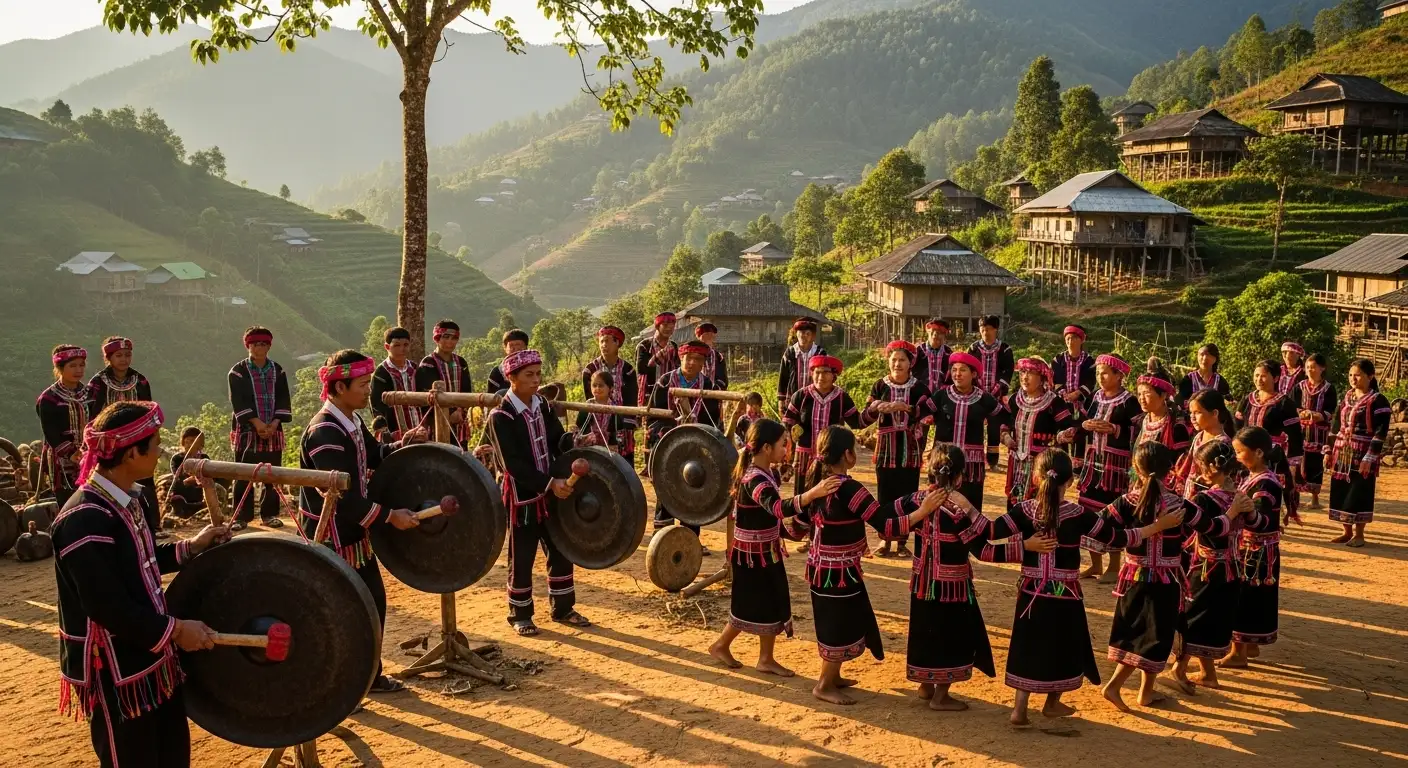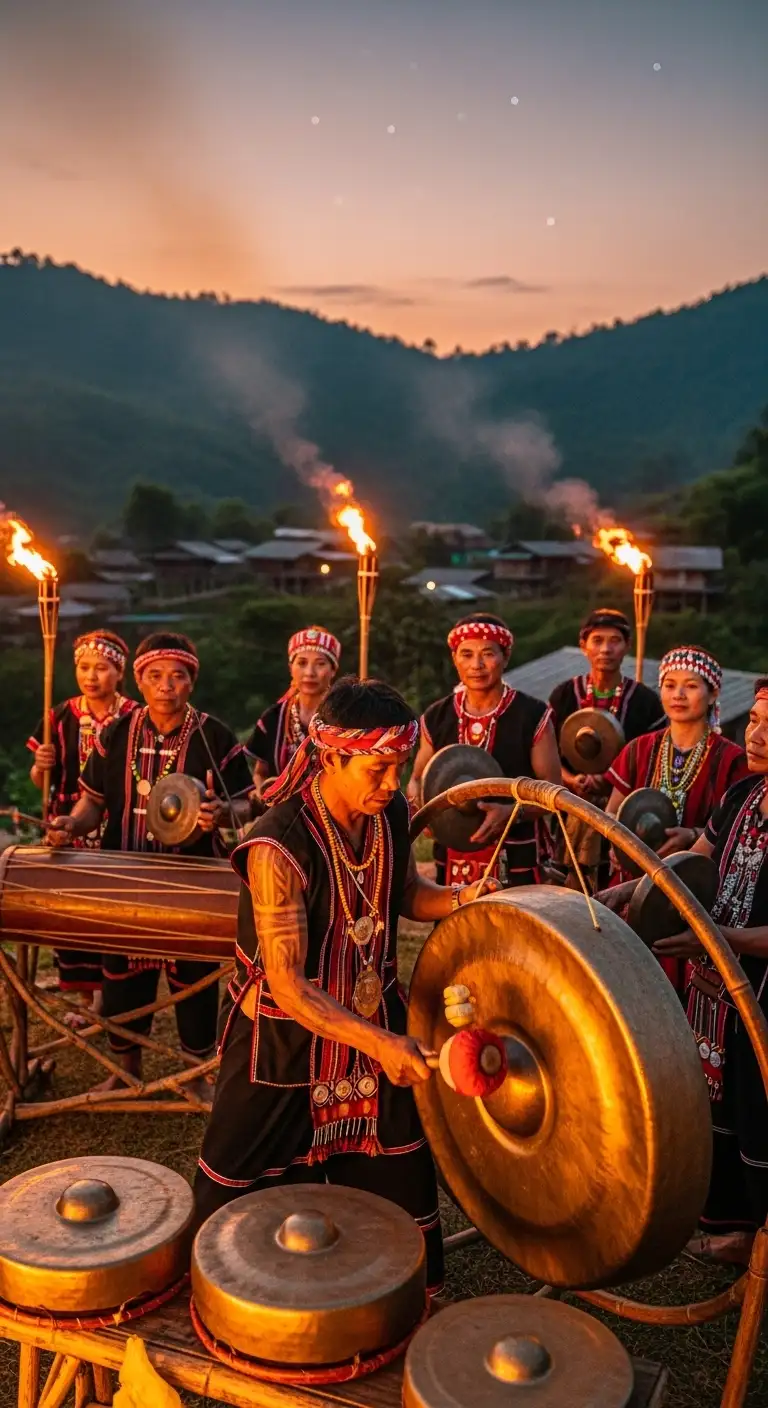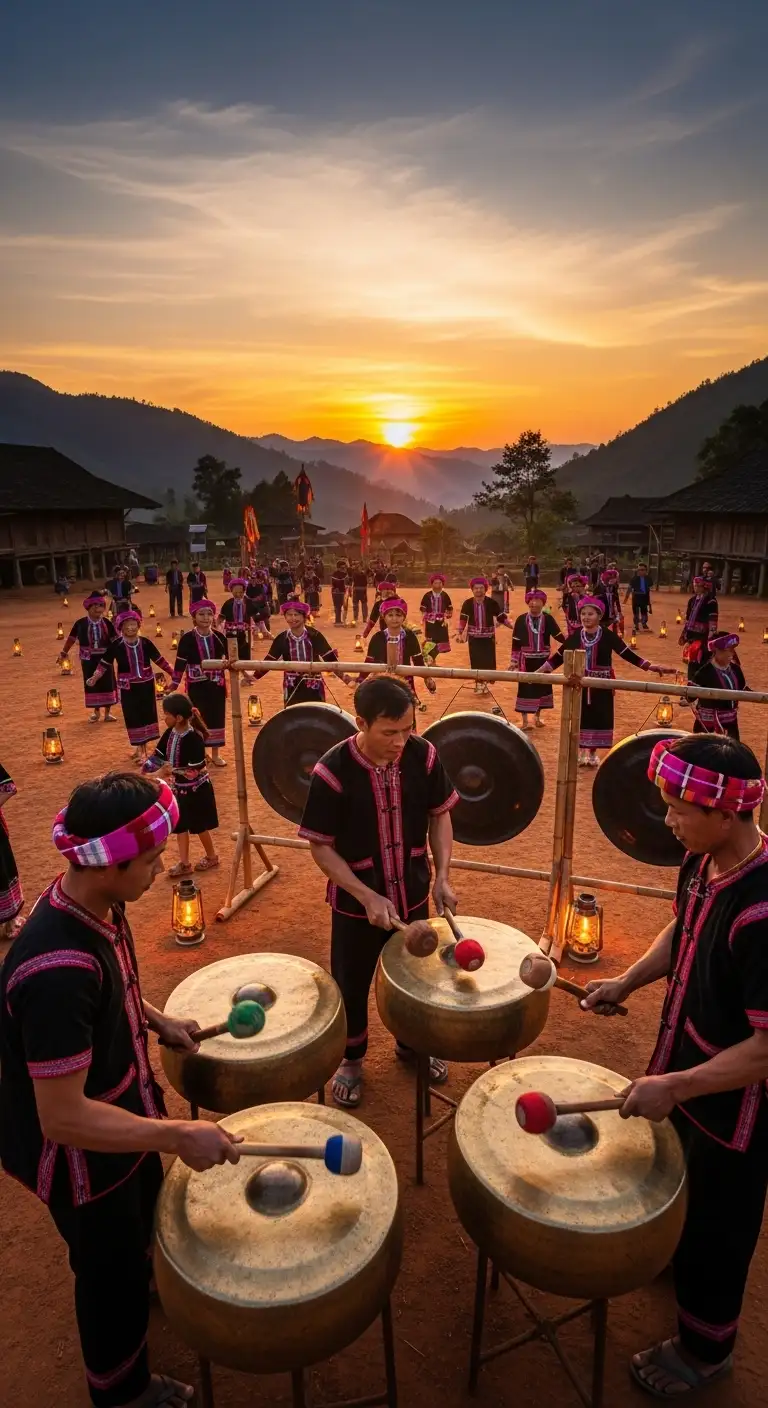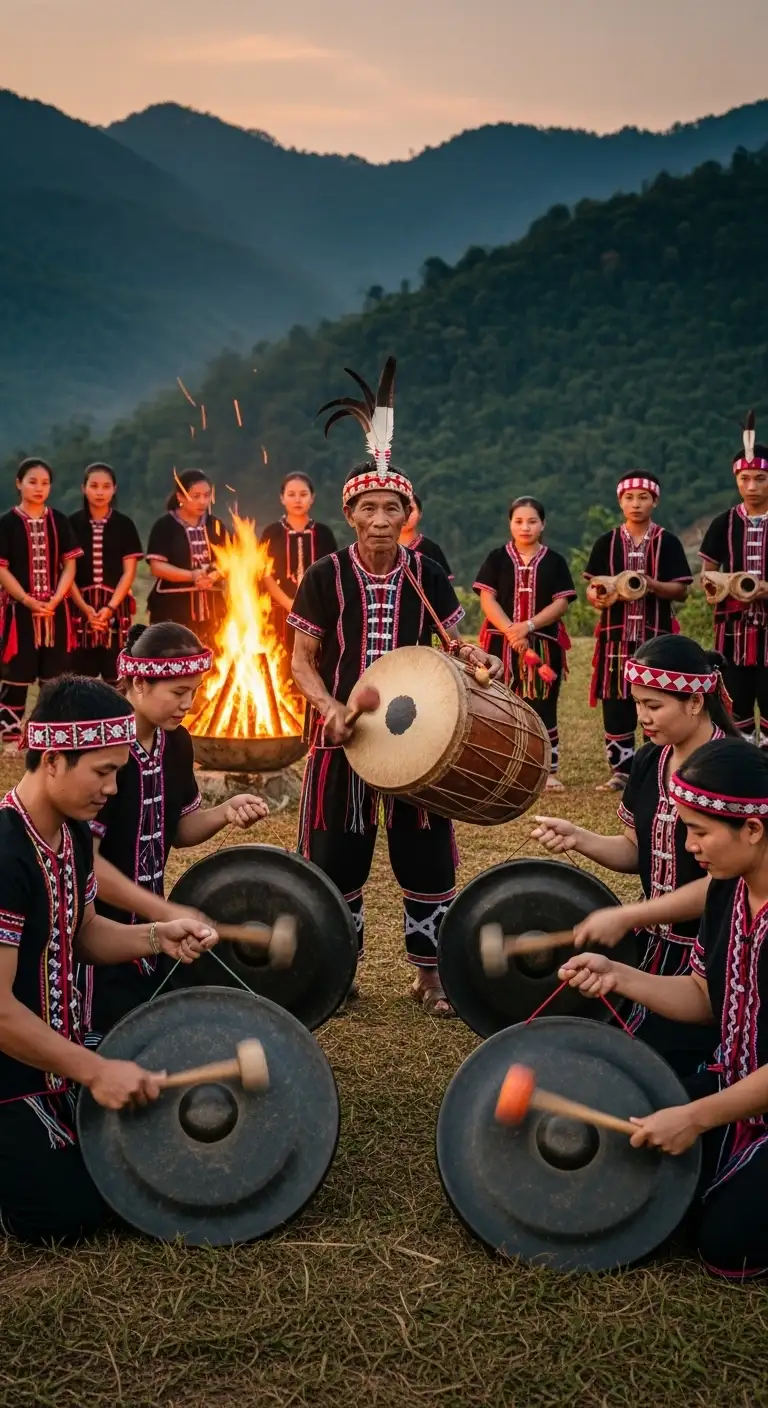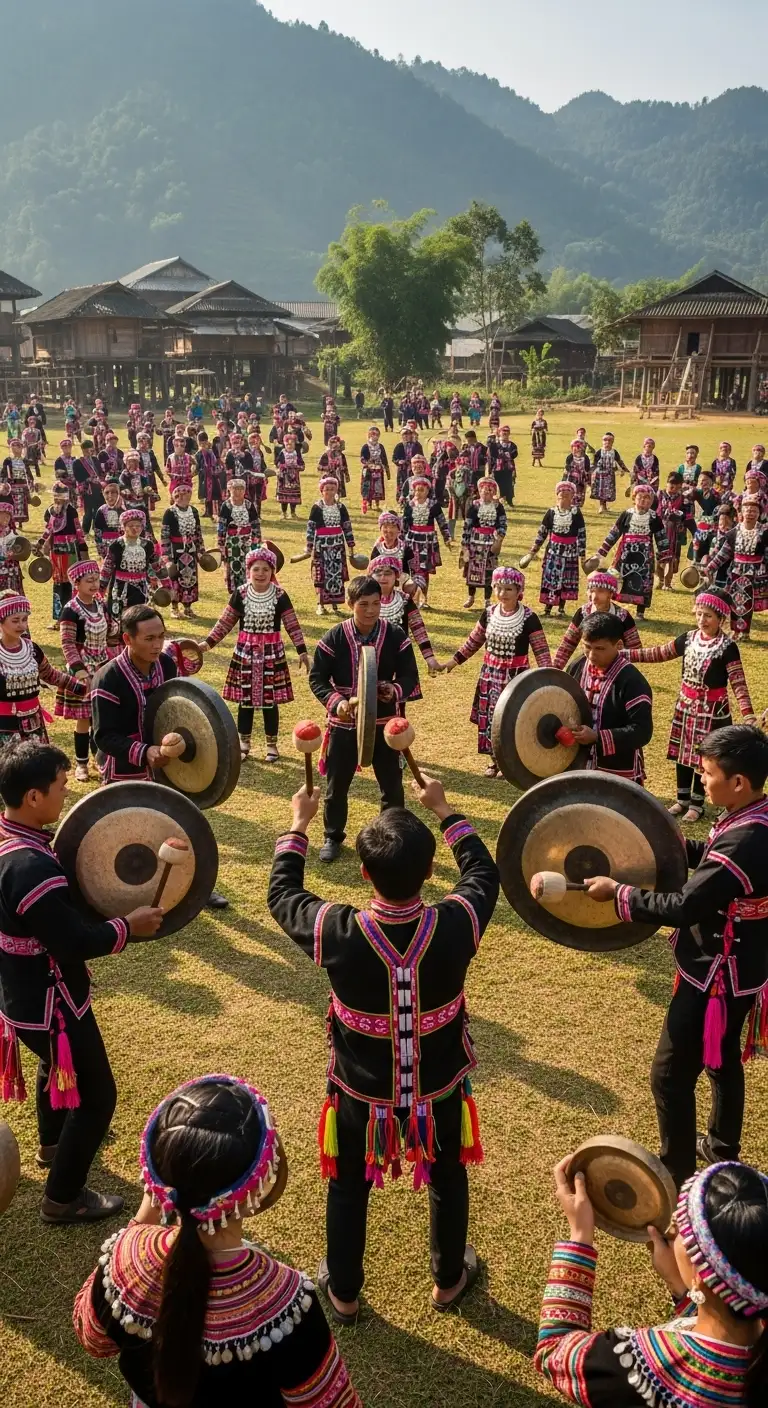Quick Facts
| Data Field (Title) | Content | Icon/Note |
|---|---|---|
| Vietnamese Name | Lễ hội Cồng Chiêng Tây Nguyên | Central Highlands Gong Festival. |
| Status | UNESCO Masterpiece of the Oral and Intangible Heritage of Humanity (recognized in 2005). | A treasure of world cultural heritage. |
| Location | Tây Nguyên (Central Highlands) Region, Vietnam | Spanning five provinces: Kon Tum, Gia Lai, Đắk Lắk, Đắk Nông, and Lâm Đồng. |
| Timing | Biennial Festival (Every two years), usually held in November or December. | The specific location rotates among the five provinces. |
| Significance | A spiritual language used by ethnic minority groups (e.g., Bahnar, Ede, Jarai) to communicate with the ancestors, deities, and the supernatural world. |
I. Overview: The Sacred Rhythm of the Central Highlands
The Central Highlands Gong Culture Festival is a celebration of the profound spiritual and cultural heritage of the ethnic groups living in the Tây Nguyên mountains of Vietnam. More than just a musical performance, the gong is considered a sacred object—a symbol of wealth, power, and the voice of the community and the spirits.
The festival serves as a crucial platform to preserve this ancient tradition, showcasing the intricate role of gongs in the daily life, rituals, and belief systems of the region’s indigenous peoples.
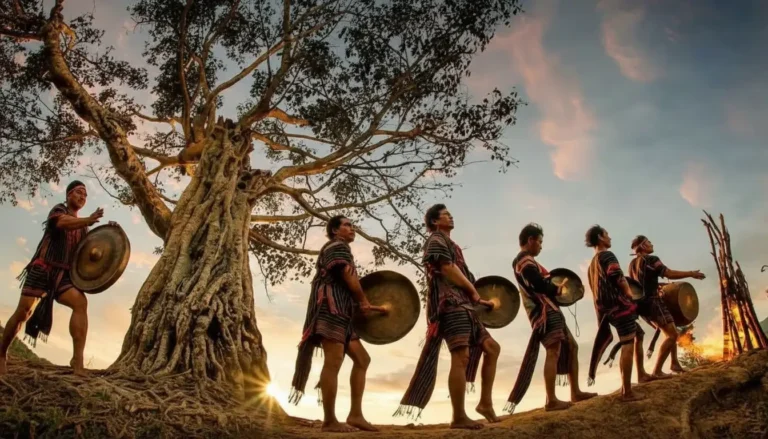
II. The Gong: A Sacred Cultural Artifact
For the people of the Central Highlands, gongs are not mere musical instruments; they are living objects believed to be inhabited by a god.
Spiritual Value: The sound of the gong is thought to be the bridge between the human world and the supernatural world. Gongs accompany villagers through every major life event, from naming ceremonies and buffalo sacrifices to funeral rites and harvest festivals.
Sets and Ensembles: Gongs are typically played in large, polyphonic ensembles, with sets ranging from 2 up to 20 pieces. Each gong is carefully tuned and often has specific, gendered names within the set, reflecting the matrilineal structure of some local societies.
Material and Age: Gongs are traditionally cast from copper or bronze. The older the gong, the higher its perceived spiritual power and value. Historically, a single gong could be worth several elephants or buffaloes, demonstrating its status as the most valuable asset in the village.
III. Festival Activities and Highlights
The Gong Culture Festival is a vibrant, multi-day event featuring a wide range of activities that immerse visitors in the region’s unique culture:
| Activity | Description |
|---|---|
| Gong Exchanges & Performances | The main highlight, where hundreds of artisans from various ethnic groups gather to play complex, resonant polyphonic music in large circles around a sacred bonfire. |
| Recreation of Traditional Festivals | Dramatized or live re-enactments of important local rituals, such as the New Rice Harvest Festival or ceremonies to pray for rain and peace. |
| Street Festival | A lively public parade featuring traditional costumes, communal dancing, and the sounds of gongs echoing through the streets of the host city. |
| Exhibitions of Traditional Crafts | Showcases of local artistry, including the craft of gong casting, folk wood carving, brocade weaving, and traditional knitting. |
| Epic Recitals | Performances of the long-form heroic sagas and myths (Epics) of the Central Highlands people, often accompanied by gong music. |
| Local Cuisine and Coffee | An opportunity to sample the region's famous coffee and unique Central Highlands dishes, often enjoyed in a festive communal setting. |
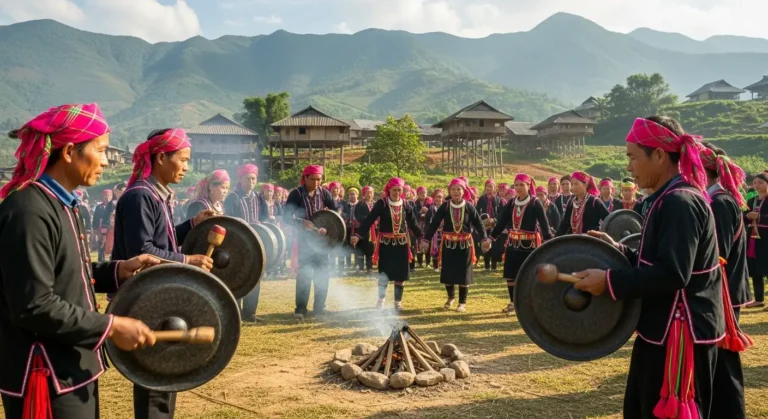
IV. UNESCO Recognition
The “Space of Gong Culture in the Central Highlands of Vietnam” was formally recognized by UNESCO in 2005. This designation highlights the tradition’s immense cultural significance and emphasizes the urgent need for its preservation against the forces of modernization. The festival is a key effort to safeguard this invaluable heritage for future generations.
